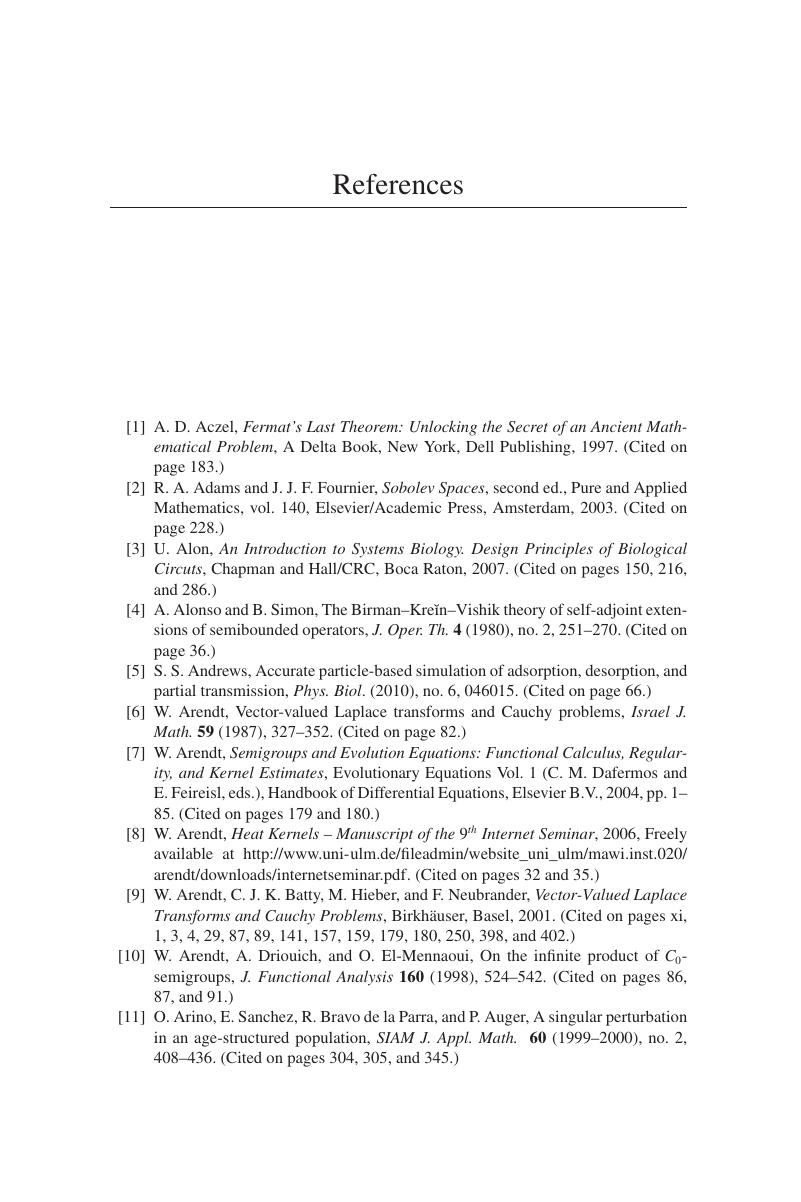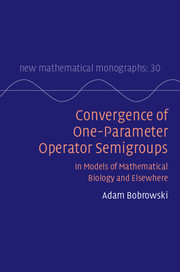Book contents
- Frontmatter
- Colophon
- Contents
- Preface
- 1 Semigroups of Operators and Cosine Operator Functions
- PART I REGULAR CONVERGENCE
- PART II IRREGULAR CONVERGENCE
- PART III CONVERGENCE OF COSINE FAMILIES
- PART IV APPENDIXES
- 62 Appendix A: Representation Theorem for the Laplace Transform
- 63 Appendix B: Measurable Cosine Functions Are Continuous
- References
- References
References
from PART IV - APPENDIXES
Published online by Cambridge University Press: 05 July 2016
- Frontmatter
- Colophon
- Contents
- Preface
- 1 Semigroups of Operators and Cosine Operator Functions
- PART I REGULAR CONVERGENCE
- PART II IRREGULAR CONVERGENCE
- PART III CONVERGENCE OF COSINE FAMILIES
- PART IV APPENDIXES
- 62 Appendix A: Representation Theorem for the Laplace Transform
- 63 Appendix B: Measurable Cosine Functions Are Continuous
- References
- References
Summary

- Type
- Chapter
- Information
- Convergence of One-Parameter Operator SemigroupsIn Models of Mathematical Biology and Elsewhere, pp. 414 - 434Publisher: Cambridge University PressPrint publication year: 2016



